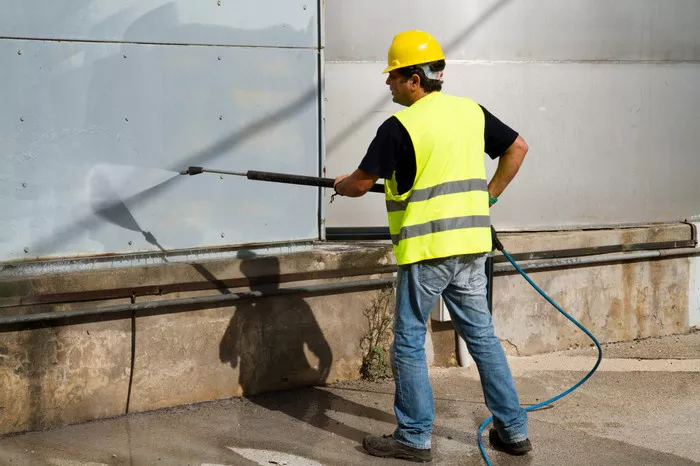In the realm of industrial and domestic cleaning, high-pressure water systems have revolutionized the way we tackle stubborn grime and dirt. These powerful machines harness the force of pressurized water to blast away debris from surfaces, making cleaning tasks more efficient and effective. However, amidst their undeniable utility, it’s crucial to recognize the potential hazards they pose if not handled with care.
Explanation of High-Pressure Washing
High-pressure washing operate by utilizing specialized pumps to increase the pressure of water, creating a forceful stream that can dislodge dirt and grime from various surfaces. The water is typically pressurized through the use of either electric or gas-powered pumps, which force the water through a narrow nozzle at high speeds.
Once pressurized, the water stream becomes a potent cleaning tool, capable of removing even the most stubborn stains and buildup. Whether it’s cleaning industrial machinery, removing graffiti from walls, or power washing outdoor surfaces, high-pressure water systems offer unparalleled cleaning power.
Pressure Levels
One of the defining characteristics of high-pressure water systems is their ability to generate extreme levels of pressure. Pressure is typically measured in pounds per square inch (psi), with standard machines capable of producing pressures ranging from 1000 to 4000 psi. However, some industrial-grade systems can exceed even higher pressures.
At these levels, the force exerted by the water stream is substantial, allowing it to penetrate and remove dirt and grime with ease. However, it’s important to note that this immense pressure also carries certain risks, particularly when it comes to the potential for cutting through materials.
Cutting Potential
While high-pressure washing is primarily employed for cleaning purposes, it possesses the inherent capability to cut through certain materials under specific conditions. This cutting potential is particularly pronounced when the water stream is highly pressurized and focused into a concentrated jet.
For instance, high-pressure water can easily cut through soft materials like skin if the pressure is high enough and the stream is directed at close range. In industrial settings, where higher pressures are often utilized, this cutting potential poses a significant risk if proper safety precautions are not observed.
Safety Precautions
Given the inherent risks associated with high-pressure water systems, it’s imperative to prioritize safety when operating these machines. Proper safety precautions can significantly reduce the likelihood of accidents and injuries. Key safety measures include:
1. Protective Gear: Always wear appropriate protective gear, including gloves, goggles, and sturdy clothing, to shield against potential injuries from high-pressure water streams.
2. Training and Supervision: Ensure that operators receive adequate training in the safe use of high-pressure water systems. Supervision by experienced personnel is also essential, especially for novice users.
3. Equipment Inspection: Regularly inspect equipment for any signs of damage or malfunction that could compromise safety. Faulty components should be repaired or replaced promptly to prevent accidents.
4. Clear Communication: Establish clear communication protocols among operators to coordinate activities and avoid accidents, especially in multi-operator environments.
5. Safe Operating Practices: Adhere to recommended operating practices, including maintaining a safe distance from the water stream, avoiding directing it towards oneself or others, and never using the equipment for purposes other than its intended use.
By following these safety precautions diligently, operators can mitigate the risks associated with high-pressure water systems and ensure a safe working environment for all.
Risks and Hazards
Despite the implementation of safety precautions, high-pressure water systems still pose inherent risks and hazards if mishandled. Failure to observe proper safety protocols can result in various injuries, including:
1. Cuts and Lacerations: The high-pressure water stream can cause deep cuts and lacerations if directed towards the body or exposed skin.
2. Abrasions and Bruises: Accidental contact with the water stream or rebounding debris can lead to abrasions, bruises, and other soft tissue injuries.
3. Puncture Wounds: Sharp objects propelled by the water stream can puncture the skin, resulting in puncture wounds that may require medical attention.
4. Eye Injuries: Without proper eye protection, operators are at risk of sustaining eye injuries from splashes or direct contact with the pressurized water.
These injuries not only cause physical harm but can also result in lost productivity, medical expenses, and potential legal liabilities. Therefore, it’s essential for operators and employers to remain vigilant and proactive in addressing safety concerns.
Conclusion
In conclusion, high-pressure water systems offer unparalleled cleaning power but also carry inherent risks if not handled with care. While these machines are generally safe when used correctly, the potential for injury cannot be overstated. By prioritizing safety, adhering to proper protocols, and investing in comprehensive training, operators can minimize the risks associated with high-pressure water systems and ensure a safe working environment for all. Remember, when it comes to safety, there’s no room for compromise.

